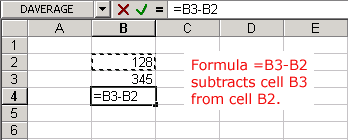

Depending on the columns and rows that you have in your sheet, the cell references might differ. Next, go to the first cell in the column for your new dates and enter a sum formula to add the number of days to the original date. Enter a positive number to add to the date or a negative number to subtract from it. How to Add or Subtract Days from Dates in ExcelĪssuming that you have the original dates to work with, enter the number of days that you want to add or subtract from the dates in that adjustment column. RELATED: How to Convert Text to Date Values in Microsoft Excelįor this example, we’re using due dates, and we have the columns set up in the order described above: Due Date, Adjustment, and New Due Date. Also, make sure that the date columns are formatted for dates in whichever style you prefer. A column to enter the number of days that you want to add or subtract.ĭepending on which data you already have in your sheet, the first step is to make sure that you have these columns.A column with the original dates (deadlines, due dates).You’ll need three columns in your sheet to accommodate the date adjustments. Excel interprets a formula as a command to do a calculation using one or more of the basic math operations addition, subtraction, multiplication, and division.


 0 kommentar(er)
0 kommentar(er)
